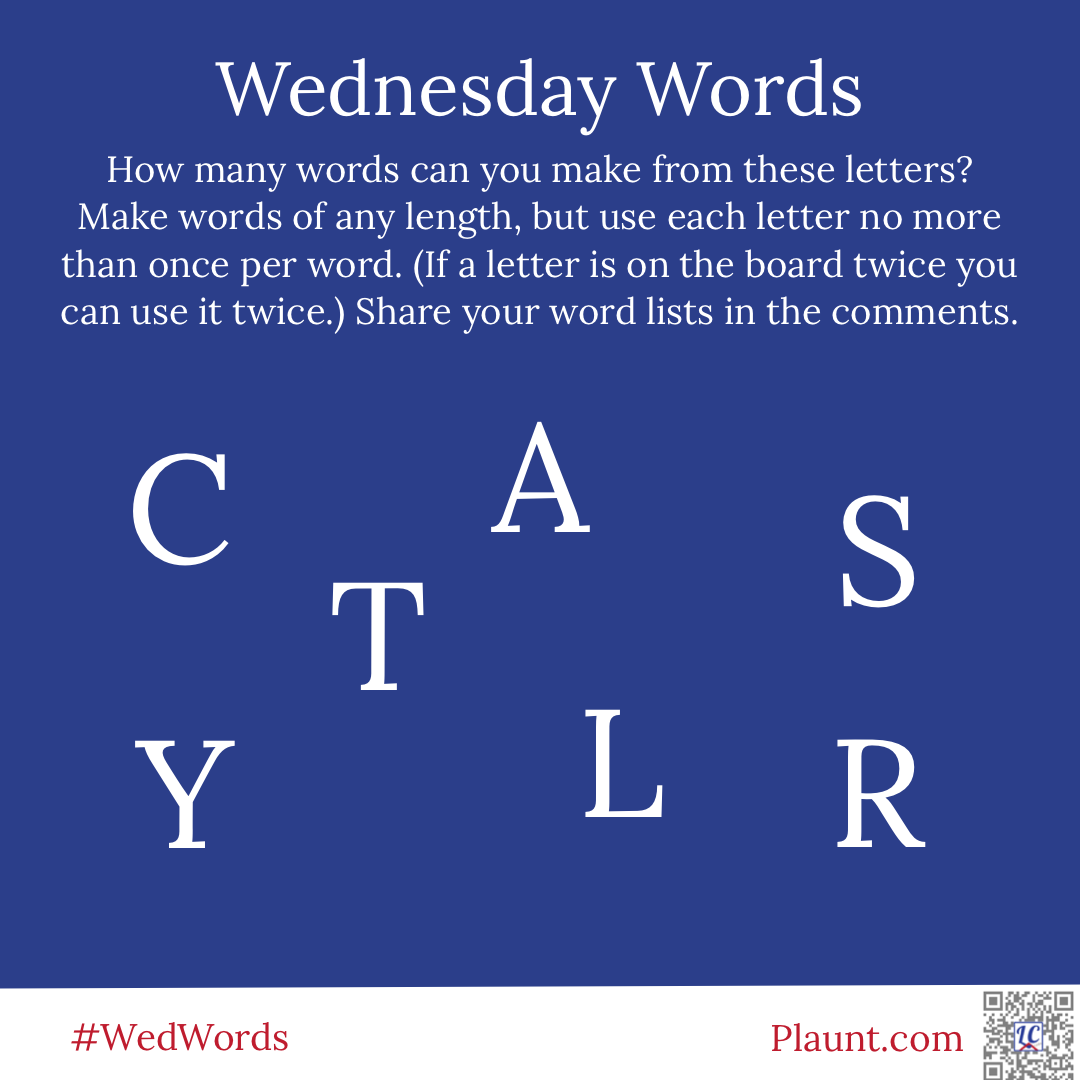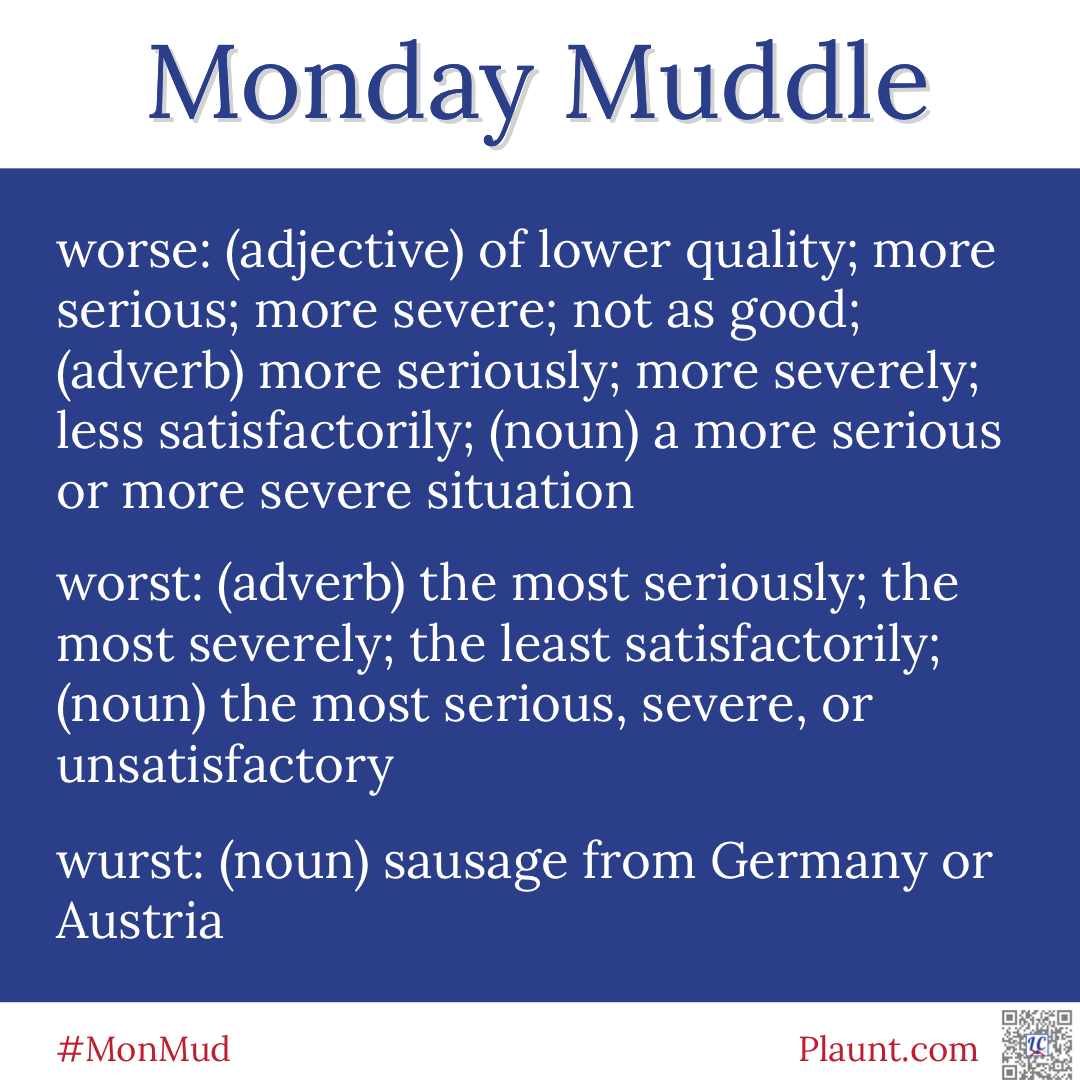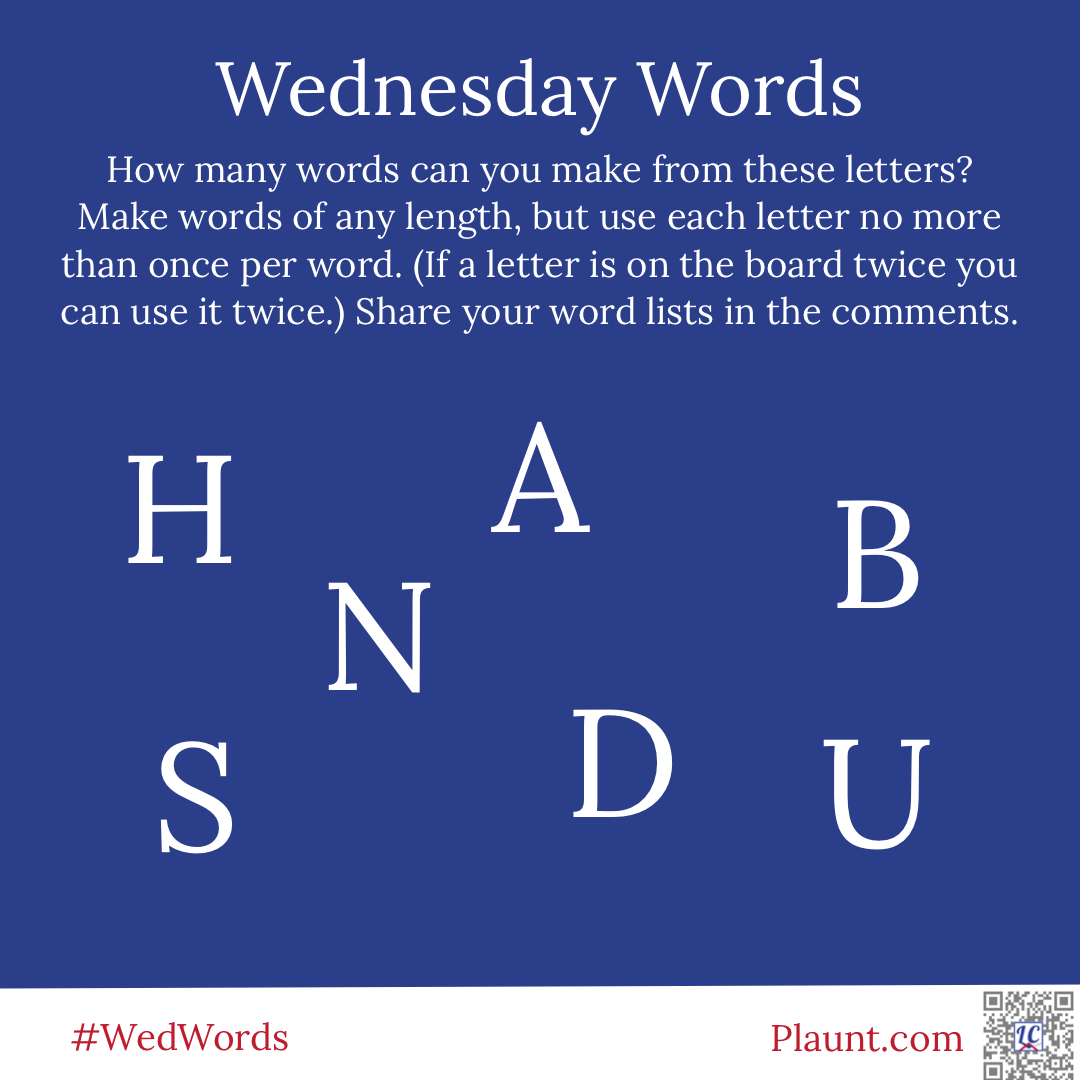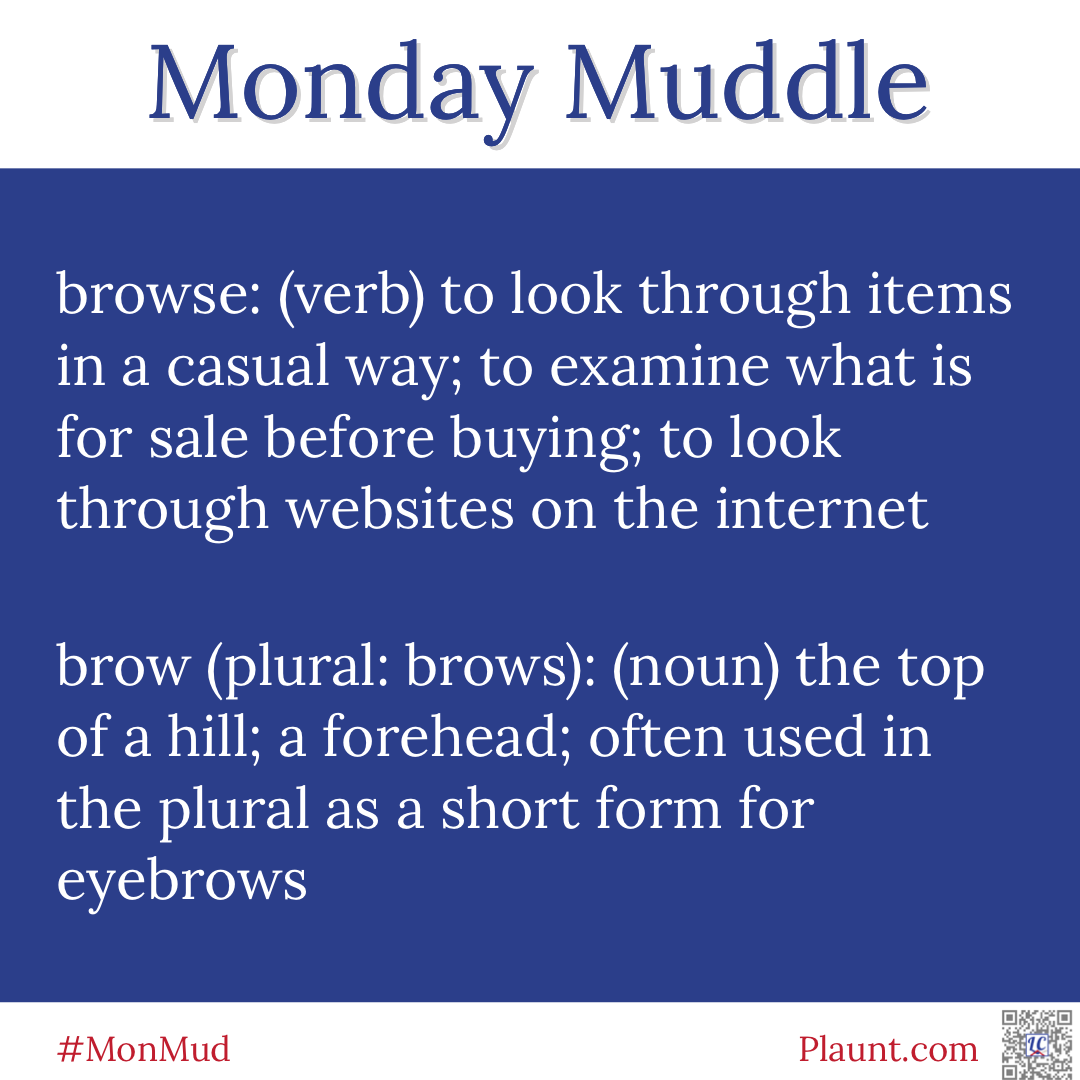How many words can you make from these letters? Make words of any length, but use each letter no more than once per word. (If a letter is on the board twice you can use it twice.) Share your word lists in the comments.

How many words can you make from these letters? Make words of any length, but use each letter no more than once per word. (If a letter is on the board twice you can use it twice.) Share your word lists in the comments.

A comparative adjective (worse) is used when you are comparing two things. A superlative adjective is used when you are comparing three or more things. Unless you are comparing sausage, and then you may need to use “wurst”.

For a weekly dose of language-based humour, visit my Facebook page at https://facebook.com/lcplauntMEd

How many words can you make from these letters? Make words of any length, but use each letter no more than once per word. (If a letter is on the board twice you can use it twice.) Share your word lists in the comments.


For a weekly dose of language-based humour, visit my Facebook page at https://facebook.com/lcplauntMEd
